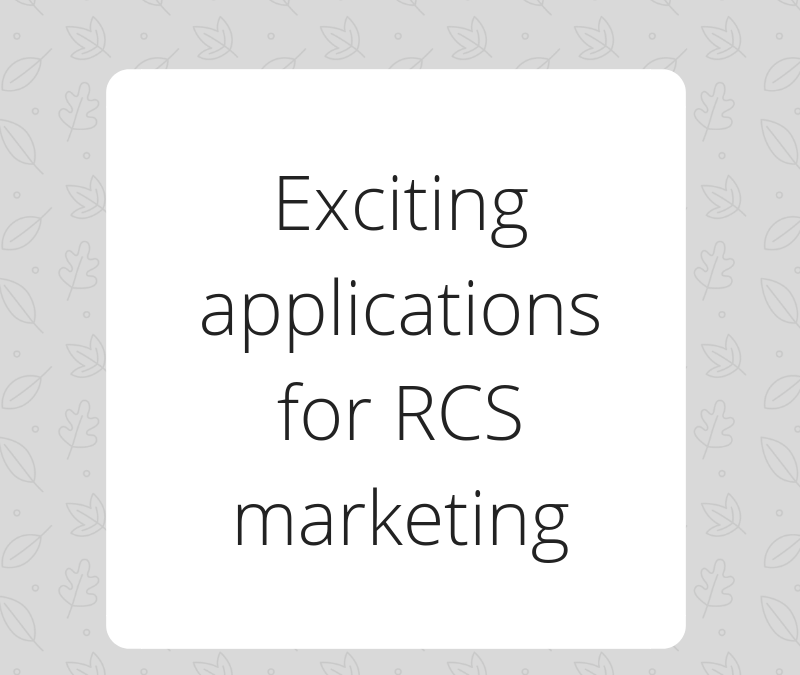As marketers, we’re always looking for the next thing. For those of us who want to stay on the bleeding edge, we want new ways to make our voice heard in a sea of digital sameness.
It’s no secret that SMS marketing is effective. But the problem with SMS marketing is that it ranges from impersonal to annoying, leading many of your valuable subscribers to say, “Nope!”
Don’t lose subscribers over bad SMS.
Fortunately, new technology is on the horizon for marketers who want a better alternative to SMS. It’s called Rich Communication Services, or RCS.
I had the pleasure of attending a conference a few months ago where a representative from Google spoke about applications for RCS. And lemme tell ya, this is going to be a game-changer.
What is RCS?
RCS is similar to SMS messaging in that it happens in the native text app on a user’s phone. Instead of sending SMS messages, you can send messages that are richer, more relevant, and interesting.
For example, instead of sending someone a boring text-based SMS promotion, RCS would include a photo, coupon, or QR code with your text content.
Essentially, RCS gives you more avenues for dynamic content that texts alone just can’t touch.
How marketers can use RCS
B2C companies like Subway are already piloting RCS marketing campaigns with amazing results.
You can do just about anything with RCS, really. The rub is that many RCS applications are still in their early stages. Remember, the sky’s the limit with RCS. Here are a few examples of how companies are already using RCS.
1. Chatbots
Your customers expect immediate communication, whether for customer service or technical support. If you’re already using chatbots for your customer service, RCS helps you kick it up a notch.
Send richer messages to your customers with RCS chatbots. Companies integrate RCS with their chatbots to:
- Solicit product reviews
- Suggest quick responses for faster service
- Share basic information, like schedules and hours
RCS makes it even easier to accomplish these exchanges. Share interactive ratings graphics through RCS that allow customers to leave reviews natively. Let them adjust their train schedule with a drag-and-drop map—all without leaving their messenger app.
Best of all, these RCS chatbots decrease pricey calls to your business. RCS boosts customer engagement and encourages quick responses. Maximize your brand by helping customers with quick, relevant, personalized care thanks to RCS.
2. Promotions
Subway does a phenomenal job promoting their business with RCS. They deliver loyalty rewards and weekly deals via RCS to their subscribers.
Complete with Subway branding, each RCS message contains a tantalizing image of this week’s free or discounted food freebie. The Google rep mentioned that Subway has already seen tremendous response with RCS. As it turns out, images significantly increase SMS conversions.
I know Subway is a B2C company, but you can use RCS in so many ways to promote your business. Send your users QR codes, calendars, a map, URLs, and even requests for quick reviews.
Best of all, RCS comes with tracking and metrics to see how your campaign performs.
3. Payments
RCS automatically integrates with popular payment gateways. This means that users can make safe, authenticated purchases from the convenience of their native SMS app.
Keep in mind that there is no charge to consumers when they use RCS. As the business, it’s you who needs to cover delivery and text fees.
The bottom line
RCS is still a relatively new phenomenon. I predict it’s going to sell like hot cakes once Google expands its use beyond the Android platform. You can stay up to date on the latest RCS happenings at the Google Jibe site.

